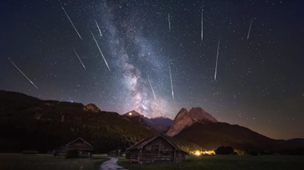Planets orbiting other stars are now known to be common. Few can be seen with even the largest telescopes but on a summer night you can at least easily look towards some of the planets discovered by NASA’s Kepler mission.
“About 2300 light years away in the direction of Lyra is a star not too different from our sun called Kepler 9 which orbited by at least two Saturn-class planets.“ This is not a quote from a science fiction novel but a statement of fact which would have been science fiction less than twenty years ago. In 1995 we knew of only nine planets (including Pluto, how times change), but in that year the first of the extra-solar planets or exoplanets was confirmed. These are planets orbiting other stars, since then they have been popping up like mushrooms thanks to new instruments, techniques and space missions. In mid August 2011 we knew of 575 confirmed exoplanets.

About 10 degrees wide, Kepler's field of view encompasses the Milky Way's packed starfield (Image credit: NASA)
One of the most amazing of the exoplanet finders is NASA’s Kepler satellite launched in 2009. This stares fixedly i to space towards an area of sky overlapping portions of the constellations Lyra, Draco and Cygnus. This region of the galaxy contains about a half million stars, and the Kepler spacecraft patently stares at about 150 000 of these simultaneously, looking for regular but tiny reductions in each star’s light that would be caused when a planet passes in front of it star. It’s painstaking work which has located seventeen previously unknown exoplanets (five of them in just one strange and crowded system). Another is one of the most Earth-like worlds yet discovered. Astonishingly there are over 1235 more exoplanet candidates observed by Kepler yet to be confirmed! Of deep interest to those intrigued by the possibility of extraterrestrial civilizations, is the leaked news that these analysis of these unconfirmed planets suggest that rocky worlds like Earth, the most promising homes for life, out-number the Jupiter-like gas giants.
What this means is that you can go out on a summer evening to look south towards Cygnus and you will know for a fact that you are looking towards seventeen completely real alien worlds! From Ireland look south at about 11.30pm this week and find the great Summer Triangle. High in the sky, the star in its upper left is mighty Deneb, more than a thousand light years distant. Sprouting from Deneb is the great cross of Cygnus, the mythical swan. To the right of Deneb is the bright star Vega, the brightest star in Lyra. The Kepler spacecraft’s telescopes stares at the patch of sky between Deneb and Vega and these are where Kepler’s planets are found. Why not go outside tonight and share in Kepler’s view of the Milky Way? Somewhere out there are millions of square kilometres of planet as real as New York or the Amazon rainforest, sadly we only dream what these worlds may look like.





3 Comments
Jason · August 30, 2011 at 07:20
“one of the most Earth-like worlds yet discovered.”
broken link 😕
admin · August 30, 2011 at 10:47
Hi, that link ought to work now, thanks for letting me know.
Exoplanets Glossary | Astronotes · October 29, 2013 at 10:34
[…] first mission to locate exoplanets the size of the Earth or smaller in or near the habitable zone. It is focused on a fixed location north of the Summer Triangle. The spacecraft was named after the German mathematician Johannes Kepler and was launched in 2009. […]